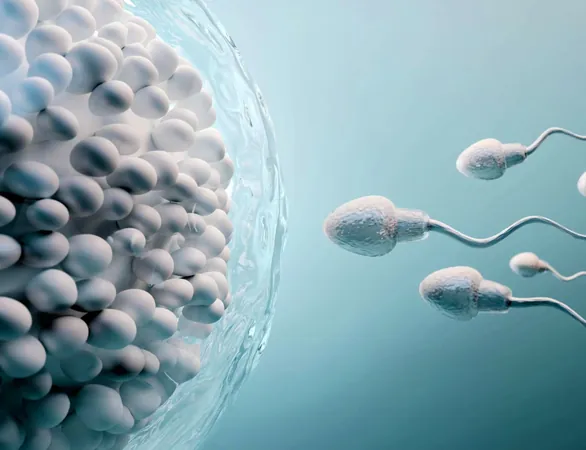
Unlocking Fertility: The Heat Switch in Sperm
2025-05-05
Author: Chun
Sperm's Secret Weapon: A Temperature Trigger
Mammalian sperm are notoriously finicky when it comes to their environment, thriving best in cool conditions below the body's normal temperature. Yet when it's time to navigate the warmer female reproductive tract, these tiny swimmers have a unique strategy to survive and succeed!
Recent groundbreaking research from Washington University School of Medicine in St. Louis reveals that sperm utilize this temperature shift as a critical signal for activation. As they enter the heat of the female body, their behavior transitions dramatically from calm, straight swimming to a vigorous thrashing action, enhancing their chances of reaching and fertilizing the egg.
The Heat Switch: A Game Changer for Fertility Science
This discovery not only sheds light on male fertility but also paves the way for new contraceptive methods. The key to this switch lies in a sperm-surface protein known as CatSper, which controls the entry of ions, energizing the sperm's powerful movements. Researchers found that when temperatures exceed 38°C (100.4°F), CatSper becomes activated, propelling sperm into their hyperactive state essential for fertilization.
“Before our study, CatSper was primarily linked to pH and progesterone levels, but our findings show that temperature is the real game-changer,” explains Dr. Polina Lishko, a leading researcher in the study.
Evolution's Cool Factor: Why Testicles Hang Below the Body
This temperature-activated mechanism demonstrates why mammals evolved with testicles located outside the body; keeping them cool ensures sperm remain inactive until entering warmer environments—precisely when activation is crucial. Other mammals, like dolphins and elephants, have developed clever cooling strategies to protect their sperm, while birds, lacking CatSper, follow a different reproductive path.
Innovative Contraception on the Horizon?
Given CatSper's specific role in sperm activation, it presents an exciting target for new contraceptive drugs. Instead of blocking CatSper, researchers propose an innovative approach: activating it prematurely, potentially draining sperm energy before it reaches the egg. “This could lead to a new, non-intrusive form of birth control while also assisting men with fertility issues,” Lishko adds.
Aging Ovaries: The Other Side of Fertility Challenges
While the findings around sperm activation are promising, the study also highlights challenges faced by women as they age. Examining ovaries from donors aged 20 to 77 revealed that different ovarian regions age at varying rates, with significant declines starting as early as age 30.
The research shows that the ovarian cortex begins deteriorating post-40, weakening the support system for eggs and leading to fertility issues well before menopause.
Future of Fertility Treatments: Activation Meets Preservation
The insights gathered from both male and female fertility shed light on critical areas for potential treatments. Male fertility could benefit from strategies aimed at timing sperm activation correctly, while female fertility may be improved through interventions that bolster the ovarian environment and prevent early aging.
As researchers continue to unravel the complexities of reproduction, understanding these mechanisms will be vital in developing advanced fertility treatments that cater to both partners. The studies are published in the esteemed journal Nature Communications, marking a significant step forward in reproductive health.


 Brasil (PT)
Brasil (PT)
 Canada (EN)
Canada (EN)
 Chile (ES)
Chile (ES)
 Česko (CS)
Česko (CS)
 대한민국 (KO)
대한민국 (KO)
 España (ES)
España (ES)
 France (FR)
France (FR)
 Hong Kong (EN)
Hong Kong (EN)
 Italia (IT)
Italia (IT)
 日本 (JA)
日本 (JA)
 Magyarország (HU)
Magyarország (HU)
 Norge (NO)
Norge (NO)
 Polska (PL)
Polska (PL)
 Schweiz (DE)
Schweiz (DE)
 Singapore (EN)
Singapore (EN)
 Sverige (SV)
Sverige (SV)
 Suomi (FI)
Suomi (FI)
 Türkiye (TR)
Türkiye (TR)
 الإمارات العربية المتحدة (AR)
الإمارات العربية المتحدة (AR)